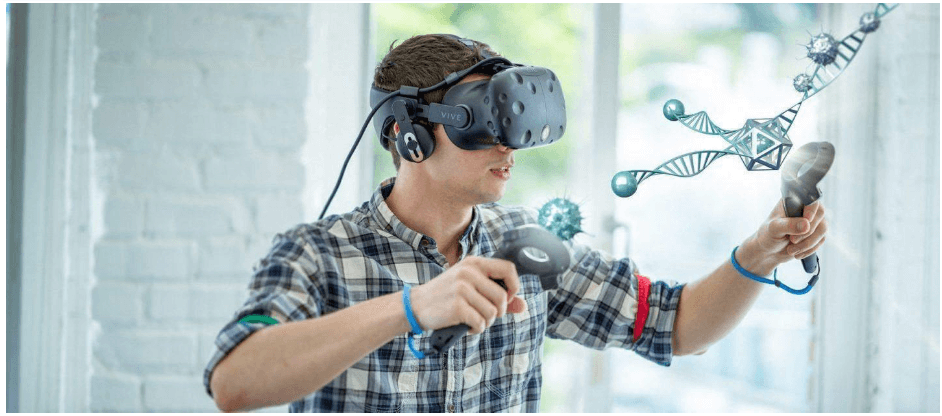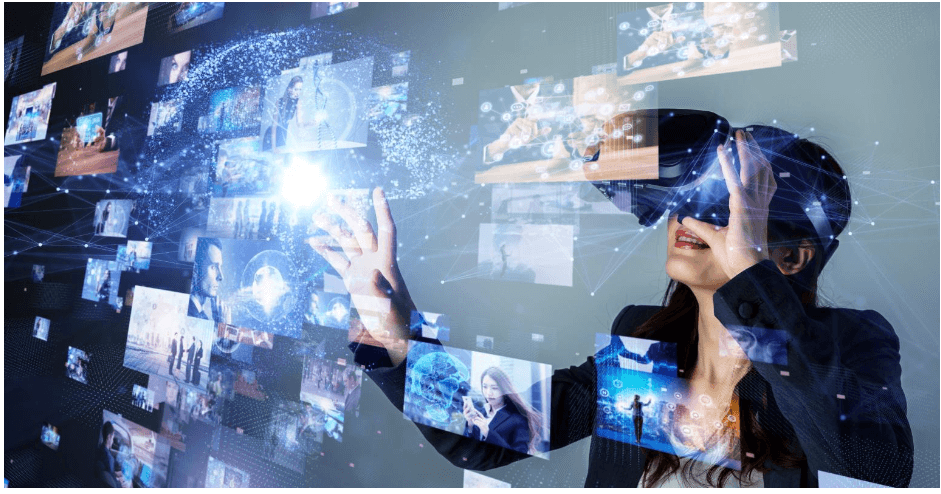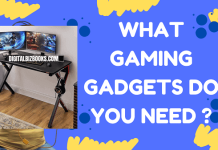Education is the essential building block for any society that wishes to flourish. Since the dawn of time, the dissemination of knowledge has been an important emphasis for the development of civilizations. Virtual reality has become increasingly popular among educational institutions in recent years as a result of the ongoing search for innovative approaches that facilitate the more efficient, rapid, and painless transmission of information.
AR is utilized on a smart device to project a layer of instructional text and content that is lesson-appropriate on top of a user’s actual surroundings. This gives students the prospect to engage in learning experiences that are both interactive and relevant. You can easily understand the concept of knowledge and education.
Taking advantage of the prospects offered by modern technology to further one’s education is something that may now be done in today’s digital age. The implementation of virtual technologies could fundamentally alter the conveyance of instructional material. Already, it is making significant headway in a variety of countries all around the world.
This post is directed just toward you if you are interested in learning about the accomplishments that have been completed as well as the problems that still need to be overcome. It throws light on what you can implement and the challenges you will encounter when transitioning to a virtual environment. Following are the Virtual Reality Achievements in education:
- Virtual Field Trips
- Virtual Tools for Real-World Learning
- Art Education
- An Improved Online Education
- Tutoring
Virtual Field Trips:
One of the most significant contributions that virtual reality has made is that it makes it possible for classrooms to participate in virtual field trips. Students at some of the nation’s most prestigious educational institutions can participate in virtual reality (VR) field trips designed to uncover them to different environments and activities.
The best aspect of virtual field trips is that once they have been created, they can be dispersed to a large number of people. Millions of students have already taken advantage of the chance provided by Discovery Education to participate in a digital excursion aboard an airship.
Virtual Tools for Real-World Learning:
Real-world learning is now made possible by the various virtual tools that are available today. A significant number of educational institutions in various nations are teaming up to develop more welcoming communities. It means that students from all over the world can collaborate through VR to find solutions to problems that occur in the real world.

Language instruction is one of the many applications now being developed for use with virtual tools. Students can now study the English language from nearly any location in the world, thanks to modern technology. It is possible to create the ideal setting for learning with the help of virtual tools, regardless of the physical location of the pupils.
According to the Cone of Experience, people are more likely to recall something they experienced as opposed to something they read, heard, or saw; therefore, virtual reality can aid in enhancing retention because people are more likely to recollect what they experienced.
Art Education:
One of the most significant contributions that virtual reality has made to the field of art instruction is. Globalization is a trend that can be seen in museums all across the world nowadays. Art lovers now have the opportunity to explore virtual galleries and virtually inspect paintings thanks to this development.

Students, for example, are allowed to view 74 paintings by Old Masters from the Netherlands and Flanders when they visit the Kremer Museum. The experience of visiting a museum has been recreated in virtual reality, allowing anyone to view paintings in the same manner as they would at a physical establishment.
An Improved Online Education:
When one investigates virtual reality’s successes in the field of education in greater depth, one finds that one of the most prominent successes is the enhancement of the online classroom. The usage of an avatar has made this accomplishment significantly more feasible.
The monotony of online classes can be broken up through the use of social VR applications. They make it possible for distant pupils to experience a sense of connection. Coursework that is completed online might utilize applications of this kind to broaden the scope of the curriculum and increase student involvement. It demonstrates how far we’ve come in terms of virtual reality.
The issue that has arisen in the past is that students are unable to construct memories when participating in online classes successfully. The classes will likely come off as nothing more than a series of dry presentations of information. On the other hand, students may have lots of opportunities to interact with one another through the use of engaging avatars if they use virtual reality.
Tutoring:
One of the most significant contributions that virtual reality has made to the field of art instruction is. Globalization is a trend that can be seen in museums all across the world nowadays. Art lovers now have the opportunity to explore virtual galleries and virtually inspect paintings thanks to this development.
Students, for example, are allowed to view 74 paintings by Old Masters from the Netherlands and Flanders when they visit the Kremer Museum. The experience of visiting a museum has been recreated in virtual reality, allowing anyone to view paintings in the same manner as they would at a physical establishment.
Final Words:
The Oculus Store was the primary focus of this investigation of the market for existing virtual reality (VR) educational applications. According to the study’s findings, the five most popular application domains for virtual reality are the fields of nature, space, medicine, art, and history. More than half of the example programs can be downloaded free of charge, and English is the language used for communication in most applications.
The study’s author gathered information regarding the number of total reviews and the average number of stars awarded by users for each educational application. The Bayesian average was computed from the collected data, and a list of the top 20 virtual reality educational applications was generated based on user ratings.








